I thought I would start with some good news. As regular readers of the blog will remember, one of the frequent contributors to the Kent History Postgraduates Group until she submitted her doctoral thesis last September was Lily Hawker-Yates. Lily had her viva on yesterday (Wednesday) and has passed. So many congratulations Lily, and it will be fascinating to see what you do next with your research on the cultural understanding of prehistoric barrows in late medieval England.
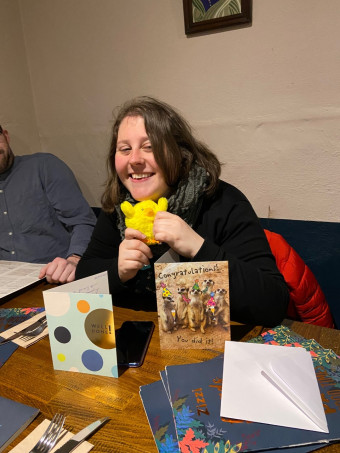
On the same day, Charlotte Liebelt submitted her doctoral thesis for examination, which is great news too. More on that as this goes through the system and she has her own viva. However, as you can see, both Lily and Charlotte celebrated with their fellow postgraduates and friends.
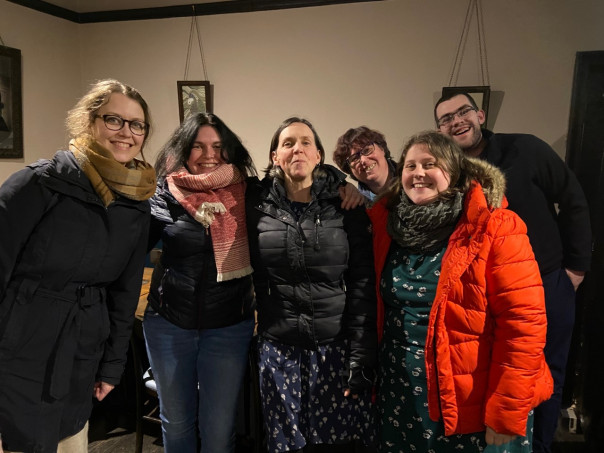
Furthermore, yesterday also saw another meeting of the Kent History group and those providing presentations were Maureen Mcleod and Janet Clayton, which meant we were looking at Tonbridge and Orpington. Maureen began by returning to the accounts she has found for the holders of Tonbridge, the earlier ones for the 14th century when the estate passed to the Crown following the defeat of the rebels against Edward II. Henry de Cobham took charge of this and other manors confiscated by the king, and, from these accounts, Maureen has been able to ascertain the farming practices employed on the demesne lands. Some of this Maureen discussed in her last presentation, the main points being that the Crown’s representative seems to have adopted a more conservative arable farming regime with very little use of legumes, especially the absence of peas and beans, leading to the adoption of fallowing fields as a means to rest the land between crops. The sheep flock similarly disappeared, and even though the dairy wasn’t sold, it was farmed out to bring in a rent, while pig production saw another system of leasing in that tenants looked after the lord’s sows, the lord receiving 5 piglets from each sow per year, the tenant keeping the remainder.
For the 15th century, Maureen has a manorial account for 1428-30, which comes from the Stafford archive, this great noble family having acquired Tonbridge following the failure of the Audley male line and the marriage of the daughter as heir. At the time of the account, Humphrey Stafford was the lord of Tonbridge, having inherited at a very young age in 1403. However, his mother’s hold on her dower lands reduced his income considerably until 1438 when he gained his full inheritance.
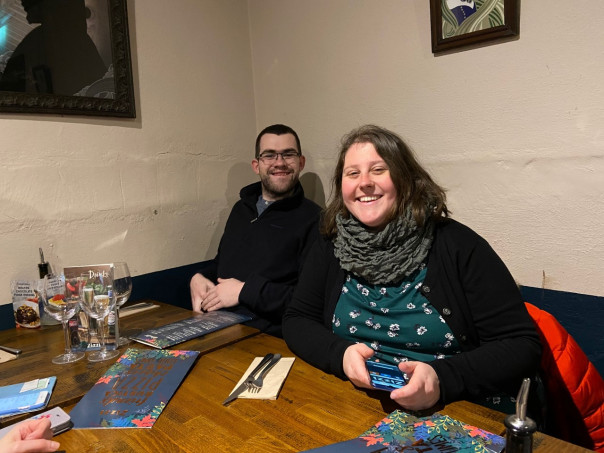
From her research, Maureen believes he was far less interested in residing in his various castles, preferring his several more comfortable great houses, although Tonbridge remained his base in Kent, in part because it was convenient when he travelled to France. Nevertheless, like many lords, lay and ecclesiastical, he leased out the demesne lands rather than farming them directly, and the person having the greatest holding was a local widow called Clementia Partridge. She had lands in two fields from the demesne and two gardens, one at least next to the castle, that meant she was paying over 40% of the total rent from the town lands of Tonbridge. Other income for Humphrey came from the four mills, albeit during the early period covered by these accounts only one of the corn mills was functioning, and the Stafford’s steward presumably oversaw the refurbishing of the other corn mill, the malt mill and the fulling mill because they were again yielding an income before the end of this accounting period. Among the expenses involved in the repairs were new mill stones that were bought in London, although they don’t seem to have brought them to Tonbridge via the River Medway, which would have been the obvious route.
Among the other issues Maureen discussed was the family’s direct use of the castle, including doing quite a bit of work on repairs and decoration, including some reroofing, the purchase of six beds and an apparent overhaul of the plumbing. There seems to have been two reasons for staying at the castle, either to go hunting in the various deer parks on the estate or as accommodation on the way to/from Canterbury. Deer remained the quarry when hunting, presumably often consumed by the earl and his guests, but venison was also a highly valued gift. Consequently, the accounts mention expenses regarding the earl’s henchmen who were accommodated at the castle with or without their lord, grooms and squires similarly, and the horses that were perhaps looked after even more diligently. There seems to have been one especially favoured hunter which received equine VIP treatment, not least because it required costly medicine on several occasions.
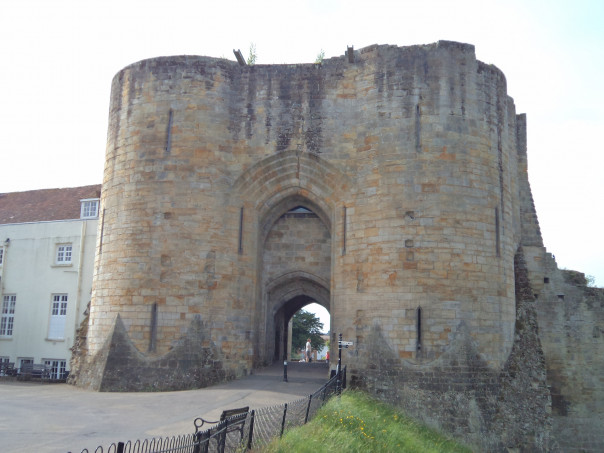
This presentation on farming practices and the shift from direct farming to leasing, as well as the shift from regular occupation to absentee landlordism, even allowing for these hunting trips, drew questions from the audience, and there was a lively discussion regarding the role of routes from London, the presence/absence of markets and the role of castles in later medieval England as noble places of residence.
In many ways there were distinct similarities concerning Janet’s presentation because she too focused on the relationship between London and west Kent, as well as the role of manorial and other centres in relation to residency of holders. I am going to keep this brief because Janet will be speaking at the Kent Archaeological Society’s Historic Buildings conference in the autumn, and I’ll just give you a taster. Her focus on Wednesday was ‘The Priory’ in Orpington as it is known. The root of this building is medieval but it has undergone considerable reworking, with various additions, from the Reformation almost up to the present today. Some of these modern modifications are significant in and of themselves, but I’ll just mention that there is an important early 20th-century ‘arts and craft’ garden, the architects for the library extension in 1959 had previously worked on Eltham Palace and the earlier section of the building had housed the local museum between 1965 and 2016.
As Janet said, this later history needs telling but it is its medieval past that she wanted to focus on, not least because ‘The Priory’ takes its name from its being the heart of Christ Church Priory’s manor of Orpington, being a valued stopping point on the road between Canterbury and London. Thus, it was used as a place to stable horses, as well as providing hospitality for those from the priory travelling this road, and presumably also the priory’s guests who needed a staging point across north-west Kent.
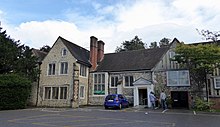
Having examined Christ Church’s medieval sources for Orpington, including bedels’ rolls and a British Library manuscript (now online), Janet has found that those who were most active in building campaigns at Orpington were Priors Eastry, Chillenden and Selling, thus covering a period from the late 13th century to the late 15th century, including a fireplace in the hall during the last building refurbishment.
This might be said to be relatively straightforward, but the question Janet posed was how did all this relate to residence of the holder of the rectory of Orpington pre-Reformation for thereafter this grand house had been the rectory until it was sold by the Anglican Church in 1919. Janet mentioned Hugh de Mortimer, one of those traditionally said to have been a medieval occupant, he was the holder of the rectory because there is a reference to his court there, but as those in the audience agreed, this was not conclusive and Mortimer had also held the rectory at Cliffe, as well as the manor there. The discussion continued over lunch, and whether we were really able to Janet to locate helpful archival sources only time will tell. Thus, again we had two fascinating presentations and next month it will be Jane Richardson and Dean Irwin.
Finally, if readers are in Canterbury this Saturday evening and would like to come to the joint Centre with CHAS and FCAT lecture by Professor Paul Bennett, Director of Canterbury Archaeological Trust, on the work of the Trust over the last 12 months, please do. It will start at 6pm in Old Sessions House, CCCU, booking not required. Additionally, I just thought I would mention that on Tuesday I was at a meeting at the Kent History & Library Centre. This was very productive and the Centre hopes to work with Sarah Stanley and her team, especially Elizabeth Finn, regarding an event in Canterbury to showcase the Kent Manorial Register project that Liz worked on. Although at an early stage, I hope it can take place this summer and I’ll let you know as things progress.
 Centre for Kent History and Heritage
Centre for Kent History and Heritage Sheila Sweetinburgh
Sheila Sweetinburgh 954
954

